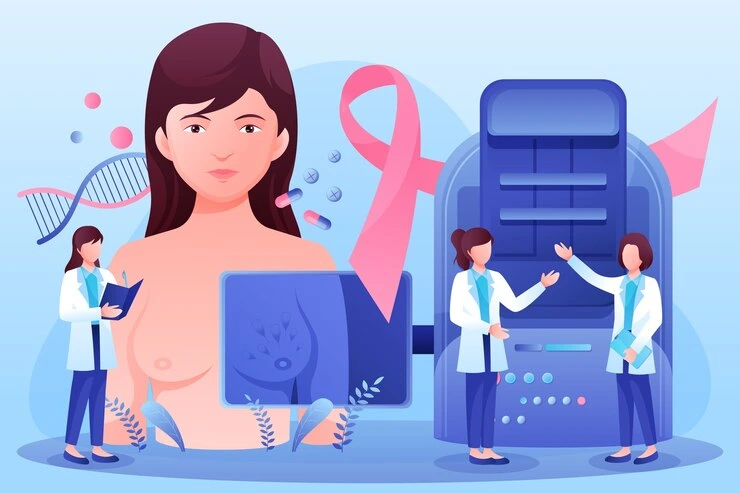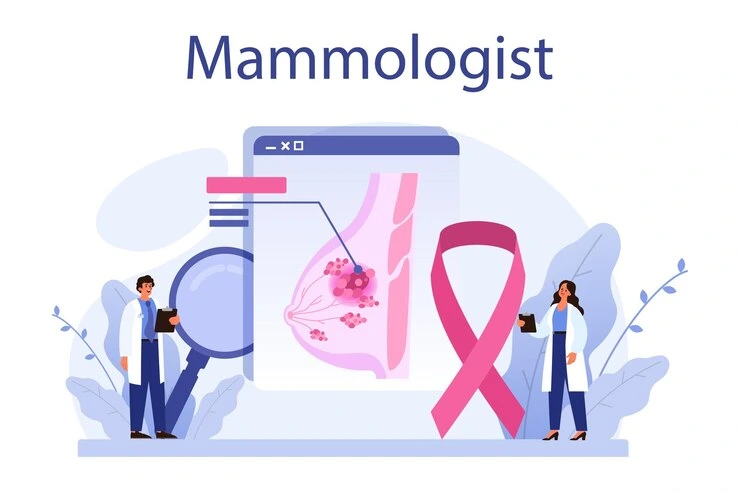-
BP Poddar Hospital
BP Poddar Hospital

Hello Reader!
Welcome to the blog page of Dr. Sunny Khanna, one of the best surgical oncologist in Kolkata.
Breast cancer is one of the most common cancers among women worldwide, and early diagnosis plays a pivotal role in successful treatment. One of the most critical steps in the diagnostic process is a Breast Biopsy, which provides detailed information about any suspicious lumps or abnormalities. As the best surgical oncologist in Kolkata, Dr. Sunny Khanna emphasizes the importance of breast biopsy in ensuring accurate diagnosis and guiding effective treatment strategies.

A Breast Biopsy is a medical procedure where a small sample of breast tissue is removed for microscopic examination. This procedure helps determine whether a lump in the breast is benign (non-cancerous) or malignant (cancerous). By analyzing the tissue, doctors can identify the type, grade, and stage of cancer, which is crucial for devising the appropriate treatment plan.
In the context of breast cancer, a biopsy is a definitive diagnostic tool that helps:
There are various methods of performing a breast biopsy, and the choice depends on the specific case:
At Dr. Sunny Khanna’s clinic, we use advanced technologies to perform these biopsies safely and efficiently, making us a trusted name for breast cancer diagnosis and treatment in Kolkata.

The results of a breast biopsy form the foundation of a patient’s cancer care plan. They help oncologists decide:
Dr. Sunny Khanna, known as the best surgical oncologist in Kolkata, ensures that every biopsy is conducted with precision and care to deliver accurate results.
Patients often feel anxious about undergoing a breast biopsy. However, the procedure is relatively simple and minimally invasive. Here are some tips to prepare:
At Dr. Sunny Khanna’s clinic, we focus on making the process as comfortable and stress-free as possible for our patients.
After a breast biopsy, it’s normal to experience mild discomfort or bruising. Here’s how to care for yourself:
Also Read: The Future of Cancer Treatment: How Robotic Surgery is Changing Oncology

Before undergoing a breast biopsy, it is important to follow specific dietary guidelines to ensure your safety and the success of the procedure. Here are the key precautions regarding what to avoid eating or drinking:

A breast biopsy is a critical procedure in the diagnosis and management of breast cancer. While it is generally safe, like any medical procedure, it carries potential risks. Understanding these risks can help patients make informed decisions about their healthcare. Here are the key risks associated with breast biopsy:
Infection at the biopsy site is a potential risk. Although rare, it can occur if bacteria enter through the skin during the procedure. Symptoms of infection may include redness, swelling, warmth, and discharge from the site.
Bleeding can occur during or after a breast biopsy. While most bleeding is minor and can be controlled easily, some patients may experience prolonged bleeding that requires medical attention.
A hematoma is a localized collection of blood outside of blood vessels, which can occur at the biopsy site. This may lead to swelling and discomfort but usually resolves on its own.
Similar to a hematoma, a seroma is a collection of clear fluid that can accumulate at the biopsy site. It may require drainage if it becomes large or painful.
Patients may experience changes in sensation around the biopsy site, including numbness or tingling in the nipple or surrounding skin. These sensations are often temporary but can occasionally persist.
Scarring at the biopsy site is possible, especially if a surgical biopsy is performed. The extent of scarring depends on the size of the incision and individual healing processes.
Depending on how much tissue is removed during the biopsy, there may be changes in the appearance of the breast. This could result in asymmetry or alterations in breast shape.
For individuals with breast implants, there is a risk that the biopsy could lead to implant rupture, particularly if the procedure involves significant manipulation around the implant area.
In very rare cases, more serious complications can occur, such as pneumothorax (collapsed lung) or milk fistula formation (an abnormal connection between milk ducts). These complications are uncommon but should be discussed with your healthcare provider.

It’s important for patients to monitor their recovery after a breast biopsy and contact their healthcare provider if they experience:
Recovery from a breast biopsy varies depending on the type of biopsy performed and individual patient factors. Here’s a summary of typical recovery times based on the type of biopsy:
Proper aftercare can facilitate a smoother recovery:
A breast biopsy is a critical procedure in the diagnosis and management of breast cancer. While it is generally safe, like any medical procedure, it carries potential risks. Understanding these risks can help patients make informed decisions about their healthcare. Here are the key risks associated with breast biopsy:
Infection at the biopsy site is a potential risk. Although rare, it can occur if bacteria enter through the skin during the procedure. Symptoms of infection may include redness, swelling, warmth, and discharge from the site.
Bleeding can occur during or after a breast biopsy. While most bleeding is minor and can be controlled easily, some patients may experience prolonged bleeding that requires medical attention.
A hematoma is a localized collection of blood outside of blood vessels, which can occur at the biopsy site. This may lead to swelling and discomfort but usually resolves on its own.
Similar to a hematoma, a seroma is a collection of clear fluid that can accumulate at the biopsy site. It may require drainage if it becomes large or painful.
Patients may experience changes in sensation around the biopsy site, including numbness or tingling in the nipple or surrounding skin. These sensations are often temporary but can occasionally persist.
Scarring at the biopsy site is possible, especially if a surgical biopsy is performed. The extent of scarring depends on the size of the incision and individual healing processes.
Depending on how much tissue is removed during the biopsy, there may be changes in the appearance of the breast. This could result in asymmetry or alterations in breast shape.
For individuals with breast implants, there is a risk that the biopsy could lead to implant rupture, particularly if the procedure involves significant manipulation around the implant area.
In very rare cases, more serious complications can occur, such as pneumothorax (collapsed lung) or milk fistula formation (an abnormal connection between milk ducts). These complications are uncommon but should be discussed with your healthcare provider.
It’s important for patients to monitor their recovery after a breast biopsy and contact their healthcare provider if they experience:

A breast biopsy helps confirm whether a lump or abnormality is cancerous and provides detailed information to guide treatment plans.
No, many breast lumps are benign. A breast biopsy helps differentiate between non-cancerous and cancerous lumps.
Most breast biopsies are minimally invasive and performed under local anesthesia, making the procedure relatively painless.
Results typically take a few days to a week, depending on the complexity of the analysis.
An experienced oncologist ensures the biopsy is conducted accurately and interprets the results to create an effective treatment plan.
A breast biopsy is a crucial step in the fight against breast cancer. With accurate diagnosis and timely treatment, the chances of recovery are significantly enhanced. As the best surgical oncologist in Kolkata, Dr. Sunny Khanna provides expert care and personalized treatment plans for every patient.
If you or someone you know is dealing with breast abnormalities, don’t wait. Schedule a consultation today and take the first step towards a healthier future.

January 30, 2025

January 29, 2025

January 28, 2025